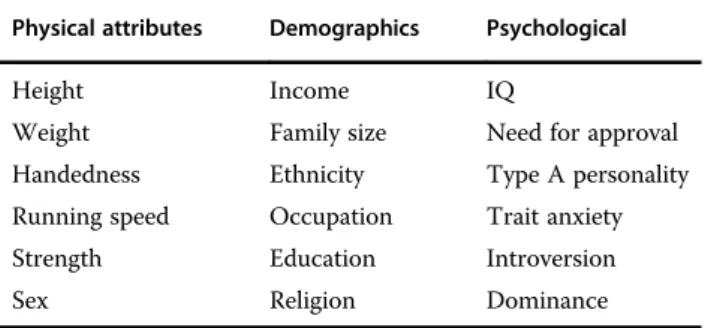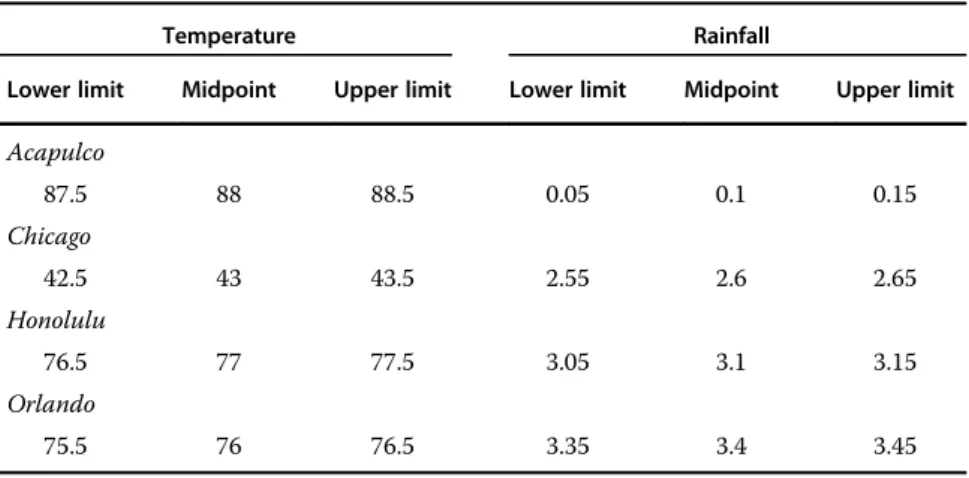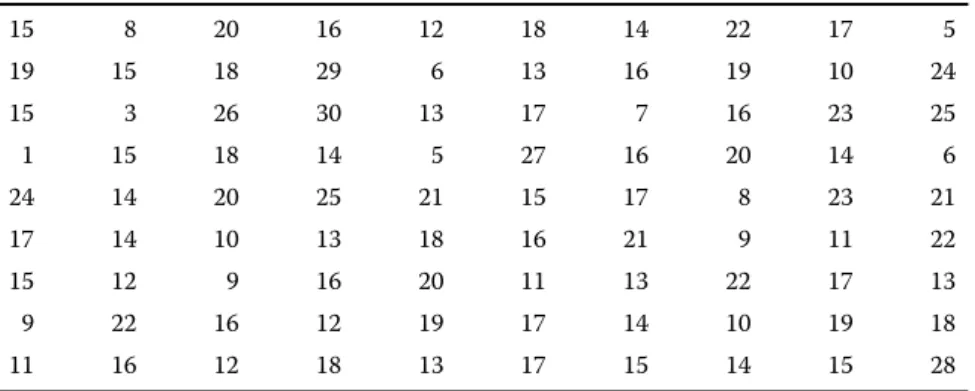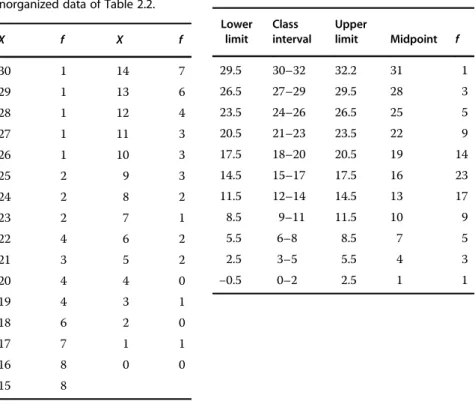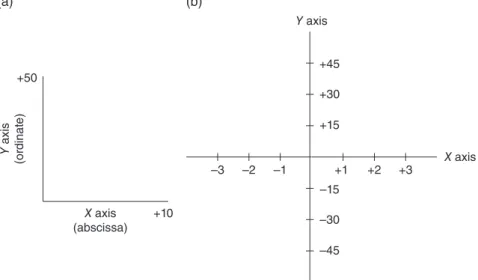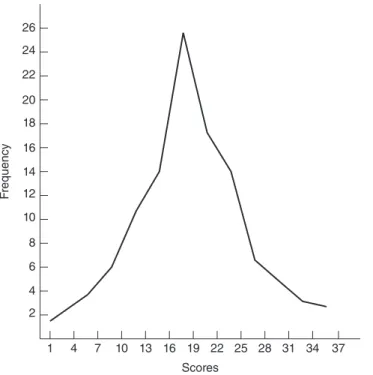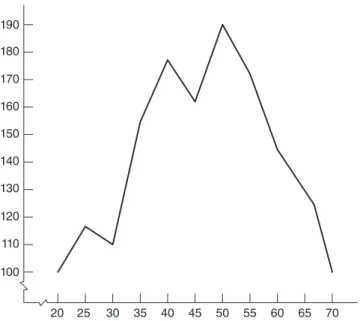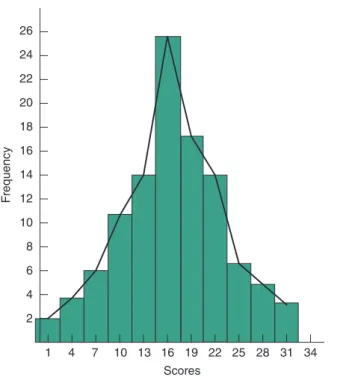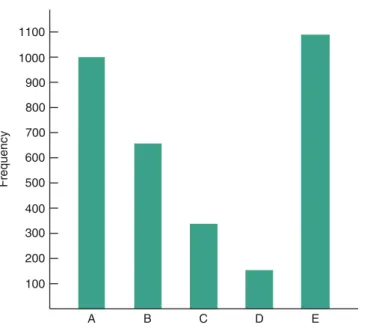Using Microsoft®Excel and SPSS® to perform single-sample tests 253 9 Test the difference between two means: the independent samples. Use Microsoft®Excel and SPSS® to perform a two-way ANOVA 465 14 Repeated-measures analysis of variance 483 .
Review Nonparametric Tests 727
Preface
Goals of the Text
In addition, this text places great emphasis on the research context of the statistical analysis discussed. This number-crunching process gives the student a deeper understanding of the inner workings of statistical formulas.
Organization and Flexibility
Emphasis on the conceptual foundations of hypothesis testing distinguishes this textbook from those that offer a "cookbook" approach. Finally, the chapter on power can be omitted without sacrificing the student's understanding of hypothesis testing.
Student Aids in the Text
Appendix A contains useful tables for determining the various critical values needed for probability determination and null hypothesis testing. It has been our experience that students overwhelmingly prefer that all the answers to the work problems be given, and so they are, in Appendix B.
Acknowledgments
About the Companion Website
Basic Concepts in Research
The Scientific Method
In our example, we want to closely measure the personalities of our incoming freshmen and the nature of the friendships in the room at the end of the semester. The remainder of this introductory chapter provides an overview of the research enterprise.
The Goals of the Researcher
Correlation involves a description of the degree of association between the subject of interest and other variables. In our study of holidays, for example, we might be interested in seeing if there was a correlation between the age of the holidaymakers and the type of holiday chosen.
Types of Variables
The groups do not differ in the amount of the independent variable, but rather in the type of independent variable used. Conversely, when a condition is characterized by the presence of the independent variable, it is often referred to as the experimental group.
Controlling Extraneous Variables
Participant variables are characteristics of the participant that have been recorded before the start of the experiment. Within two months, all the performing monkeys had died or become too incapacitated to continue the study.
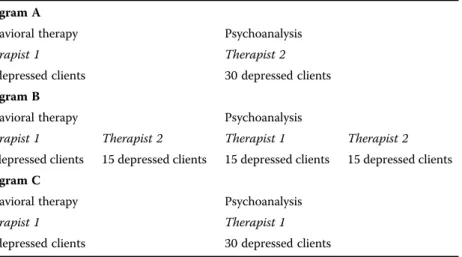
Validity Issues
After the experimental manipulation (feedback on success or failure), an ally entered the room and casually placed a canister on a nearby table for donations for a school project. An ally is someone who, unbeknownst to the participant, is actually part of the experiment and has a prescribed role to play in the study.) The dependent variable was the amount of money the participants donated. The question to ask is: “Did the experimental manipulation (success/failure feedback) merely change the emotional state of the participants?” The answer is probably 'no'. Participants' self-perceptions of competence were also likely changed by the feedback about success or failure. “Success” participants were not only in better moods than “failure” participants, but may also have seen themselves as more competent than those who failed.
Causality and Correlation
Although negative thinking and depression may be related, it is possible that neither variable causes the other. It is also possible that the third variable, “loss of control”, causes both “negative thinking” and “depression”.
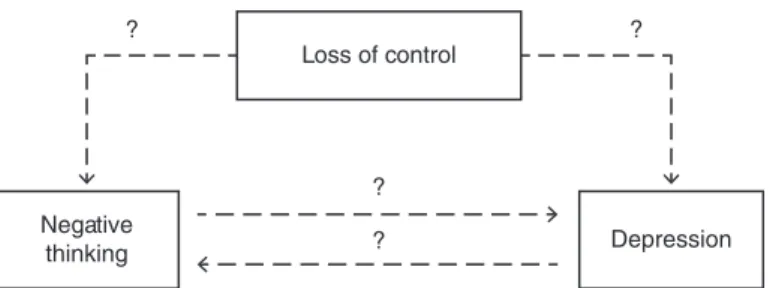
The Role of Statistical Analysis and the Organization of the Textbook
Each chapter concludes with a summary, a collection of all relevant formulas and keywords introduced in that chapter, and a series of questions and exercises that students can use to practice their skills and for self-assessment. Each section (beginning with Section 4) concludes with additional work problems designed to challenge the student's ability to determine which of the statistical tests previously covered apply to a particular research analysis situation.
Summary
Holding constant, balancing, and randomizing are some of the mechanisms used to control extraneous variables. The remainder of the text will explore various descriptive and inferential statistical concepts and tools designed to assist the researcher in interpreting data.
Key Terms
Sometimes internal validity is sacrificed to study a variable that is not easily manipulated or controlled. Although the role of statistical analysis is limited in the larger sequence of the research process, it is so important that its absence would render most empirical studies meaningless.
Questions and Exercises
The mouse must jump from the shelf through the door to the crate, on which one of the motifs is drawn. 12 For each of the following research questions, design a study that addresses the question using a controlled experiment.
Scales of Measurement and Data Display
Scales of Measurement
For example, the difference in intelligence between individuals with IQs of 100 and 105 is the same as the difference in intelligence between individuals with IQs of 45 and 50. The numerical distance between the scores is the same, but the difference in the amount of intelligence between the two sets of scores is the same.
Rensis Likert
- Discrete Variables, Continuous Variables, and the Real Limits of Numbers
- Using Tables to Organize Data
- Using Graphs to Display Data
- The Shape of Things to Come
- Introduction to Microsoft ® Excel and SPSS ®
Note that the total number of scores in the distribution is the top number in the Cum f column. A frequency polygon uses the midpoint to plot the number of scores in each of the intervals of a frequency distribution.
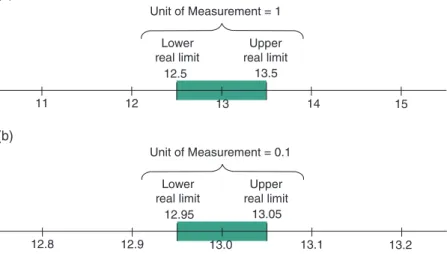
Measures of Central Tendency
Describing a Distribution of Scores
Parameters and Statistics
The Rounding Rule
The Mean
The mean is the value at which the sum of these raw variances of the scores in the data set is zero. The deviation score (sometimes called the error score) is the distance of the raw score from the mean (X–M) and is symbolized as x (pronounced . "little x").
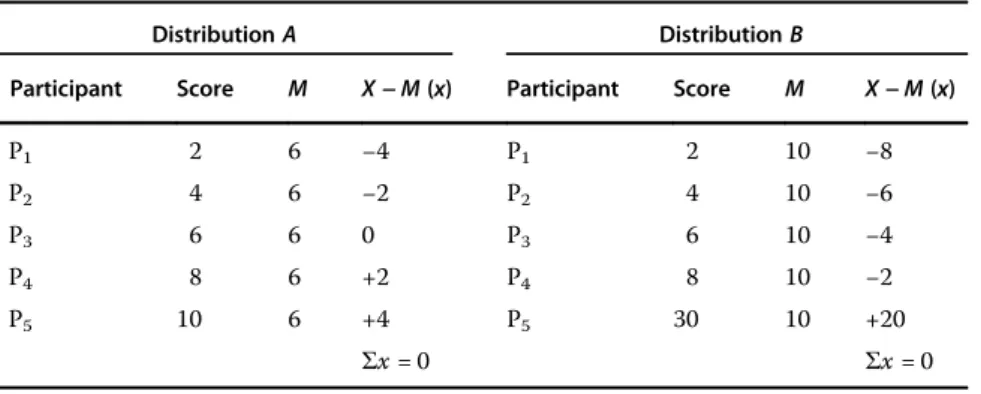
The Median
The median of a distribution with an even number of values is the middle of the middle two numbers, provided that there is no set of identical numbers in the middle.■. Three of them must go to the bottom half of the division, and two to the top half.
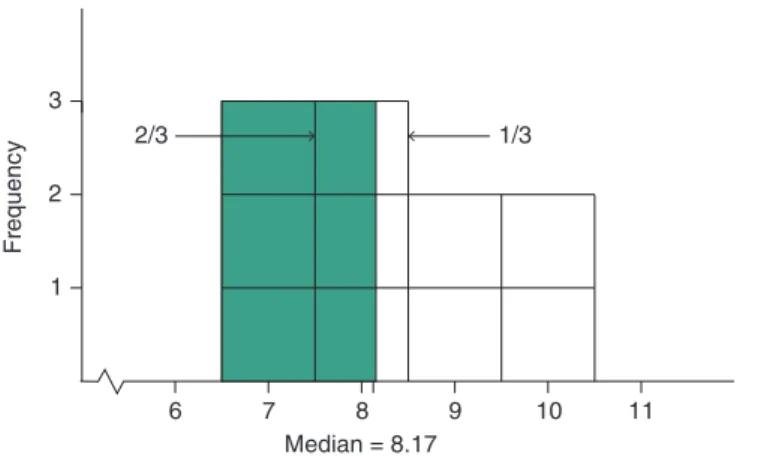
The Mode
How the Shape of Distributions Affects Measures of Central Tendency
The scores in the elongated tail pull both the median and the mean to the left, but they pull the mean forward even more because the mean takes into account the actual distance of these extreme scores from the center. The scores in the elongated tail pull both the median and the mean to the right, but they pull the mean forward even more because the mean takes into account the actual distance of these extreme scores from the center.
When to Use the Mean, Median, and Mode
Another problematic situation for averaging occurs when the distribution results are truncated. Therefore, the average is likely to be artificially low due to an arbitrary cut-off time.
Experimental Research and the Mean: A Glimpse of Things to Come
The mean is the most important and most commonly used measure of central tendency. Third, as the size of the distribution increases, the mean becomes a very stable measure of central tendency.
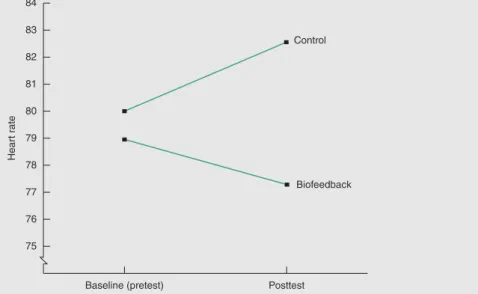
Using Microsoft ® Excel and SPSS ® to Find Measures of Centrality
If one new score with the value 5 is added, what is the value of the new mean of the new distribution. If a score with a value of 15 is removed, what is the value for the new mean.
Measures of Variability
- The Importance of Measures of Variability
- Range
- Mean Deviation
- The Variance
- The Standard Deviation
- Simple Transformations and Their Effect on the Mean and Variance
- Deciding Which Measure of Variability to Use
The sum of the raw results column is (ΣX); squaring this value yields (ΣX)2. The variance is based on the ratio each number has to the mean of the distribution.
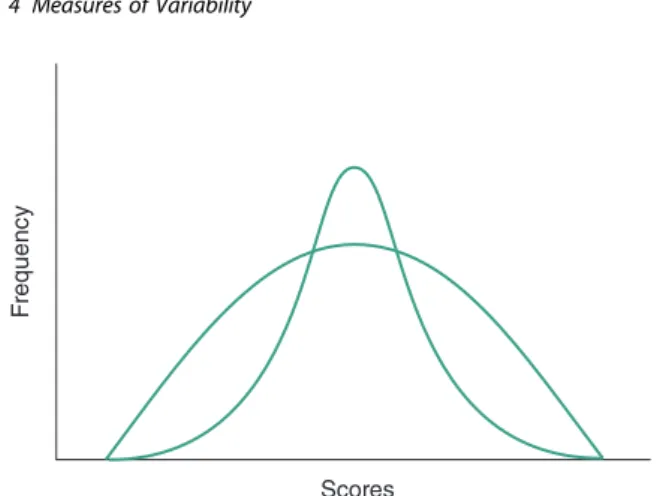
Using Microsoft ® Excel and SPSS ® to Find Measures of Variability
Here we find boxes labeled in the lower left corner under Dispersion labeledStd. deviation, variance and range. In addition, in the upper left corner, in an area marked Percentile Values, we find a box marked Quartiles.
Key Formulas
17 If a normal distribution has a mean of 50 and a standard deviation of 10, the scores include the middle 68% of the distribution. 19 If a normal distribution has a mean of 80 and 68% of the scores are between 68 and 92, what is the variance of that distribution.
The Normal Curve and Transformations
Percentile Rank
This is one reason why undergraduate admissions committees also consider students' performance on nationally standardized tests (eg, the Scholastic Aptitude Test [SAT]). Similar to the median, a percentile rank is simply determined by the relative position of the scores.
The Normal Distributions
If we were to fold the curve at the center, the two sides of the distribution would coincide. Keep in mind that any curve that possesses all of the preceding five characteristics is a normal curve.
Abraham De Moivre and the History of the Normal Curve
- Standard Scores ( z Scores)
This means that about 30% of the raw scores are between the mean and az +0.84. Azscore is the number of standard deviations of the raw score from the mean of the distribution.
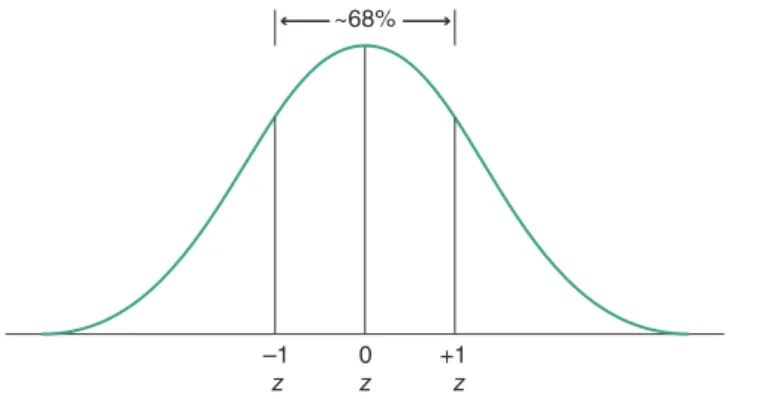
Using Microsoft ® Excel and SPSS ® to Find z Scores
9 If a distribution has a mean of 130 and a standard deviation of 13, what is the probability of picking a score above 140 at random. 40 For a population of scores with a mean of 1 and a standard deviation of 0.15, what percentage of scores will fall between the values of 0.6 and 0.7.
Basic Concepts of Probability
Theoretical Support for Inferential Statistics
For example, one could be that we will almost certainly have more red than black jelly beans in our sample. For example, if we look at our sample of 10 jelly beans and see that they are all red, this information could be useful to us as we think about the characteristics of the jar of jelly beans from which this sample came.
The Taming of Chance
For example, Figure 6.1 shows a representation of the set of outcomes associated with rolling two standard dice. Now the second treatment question can be much more representative of the issues related to probability and probability.
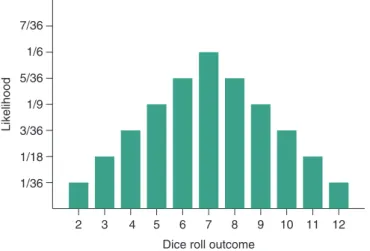
What Is Probability?
When we study how to determine the probability of a complex event if all elementary events are equally likely, we encounter our first important probability formula. Using the concept of relative frequency, we can say that a probability of 0.7 means that the event in question has a 7 out of 10 chance of happening.
Sampling with and Without Replacement
Yes, it can be argued that "something like" 7 out of 10 days with meteorological features like tomorrow's measurable rain will be recorded. However, we can still think of the .7 probability as a 7 out of 10 probability to understand what the number means.
A Priori and A Posteriori Approaches to Probability
The Addition Rule
P A = number of favorable events total number of events = 4. The probability of randomly picking a 3 from the deck is .0769. The probability of rolling a die and getting either an even number or a number greater than 4 is .6667.
The Multiplication Rule
Question What is the probability of randomly selecting a person from the campus student population who is both a psychology major and a biological female. The probability of randomly selecting a student on campus who is both a psychology major and a biological female is 8%.
Conditional Probabilities
Now let's apply the same procedure to the second question: are “Yellow” and “Y” independent. To determine whether the events “Yellow” and “Y” are independent, we must first determine the values corresponding to formulas 6.5 and 6.6.
Bayes ’ Theorem
What is the probability that it will rain tomorrow or not rain tomorrow. For example, what is the probability of getting the queen of spades given that we did not get a red card or P(queen of spades|no red card).
Thomas Bayes and Bayesianism
For example, if we know P(B), we can derive P(notB); and vice versa.) The following is Bayes' theorem. Bayes' theorem allows us to avoid the problem of inverse probability (also called the "confusion of the inverse" or "conditional probability fallacy").
